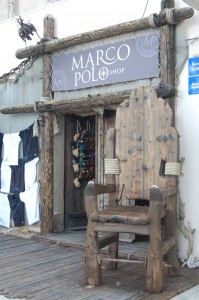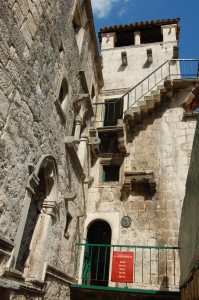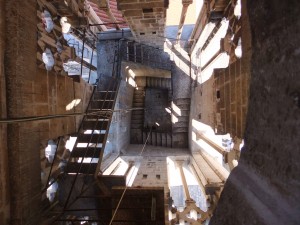
The Venetians hail famous explorer Marco Polo (1254?-1324) as one of their own, but Croatians will tell you that Marko—with a ‘k’—was actually born in the town of KorÄula, on the island of the same name. For someone who died almost 700 years ago, he is in excellent health: Marko Polo house, Marko Polo restaurant, Marko Polo ice cream… the man is around every corner.

Don’t let this deter you from visiting KorÄula, however. It is a compact, circular walled town on the eastern tip of the island, overlooking the strait of PeljeÅ¡ac. It has charm and views in abundance. The distinctive herringbone pattern of streets was supposedly designed to permit airflow but to protect against high winds.
At the center of the walled town, at the top of the hill, is the cathedral of St Mark. The exterior is decorated with many carved faces: humans, mermaids, animals. The interior has a beautiful wooden roof which contrasts with the light grey stone. If St Mark rings a bell, it is indeed the same saint as San Marco in Venice—which makes sense when you remember that Venice controlled modern-day Dalmatia for several centuries. There are many buildings in KorÄula decorated with the winged lion of Venice.

I can also speak highly of KorÄula’s pastries. The ice cream, not so much. Nothing we had anywhere in Croatia comes close to the quality of Italian gelato.
Read David’s other blog posts about the Croatia trip!

![]()





